Jupiter's moon Europa captured in close-up on camera by NASA spacecraft
Remarkable imagery and unique science results after Juno Stellar Reference Unit spacecraft passes by Jupiter's icy moon
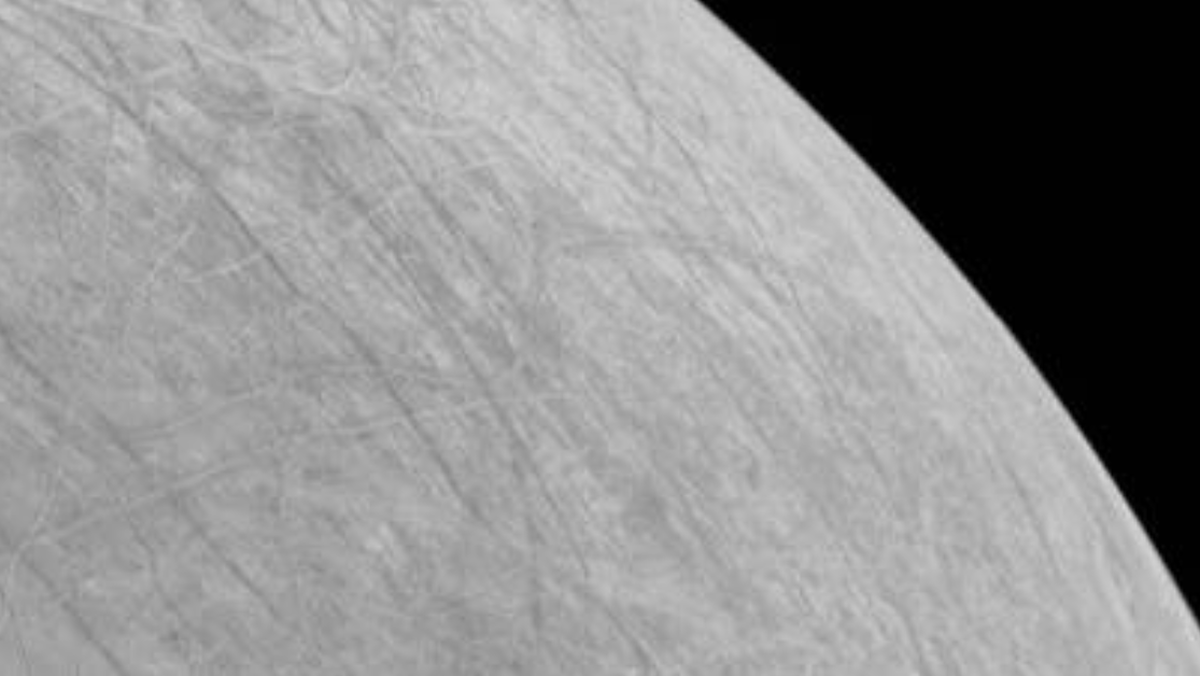
Recently, NASA's Juno Orbiter Spacecraft, equipped with the Stellar Reference Unit (SRU) star camera, has managed to capture the highest-resolution photo ever taken of Jupiter’s moon, Europa, during a flyby from about 256 miles away.
The spacecraft’s pass of the moon yielded the first close-up of Europa in over two decades, and the highest-resolution photo that NASA’s Juno mission has ever taken of a specific portion of Jupiter’s moon, revealing its heavily fractured icy crust.
• These are the best cameras for astrophotography.
Juno’s Stellar Reference Unit (SRU) is a star camera that was used to orient the spacecraft, and captured the black-and-white image during during the spacecraft’s September 29, 2022, flyby of Europa, making the closest pass in 22 years, according to NASA.
Scientists also used the flyby as an opportunity to slightly change Juno's trajectory, now expected to make a singular orbit of Jupiter in just 38 Earth days (as opposed to the previous 43 days). Europa is the sixth-largest moon in the solar system, similar in size to Earth's moon though with a very different formation and evolutionary history, as explained via Space.com.
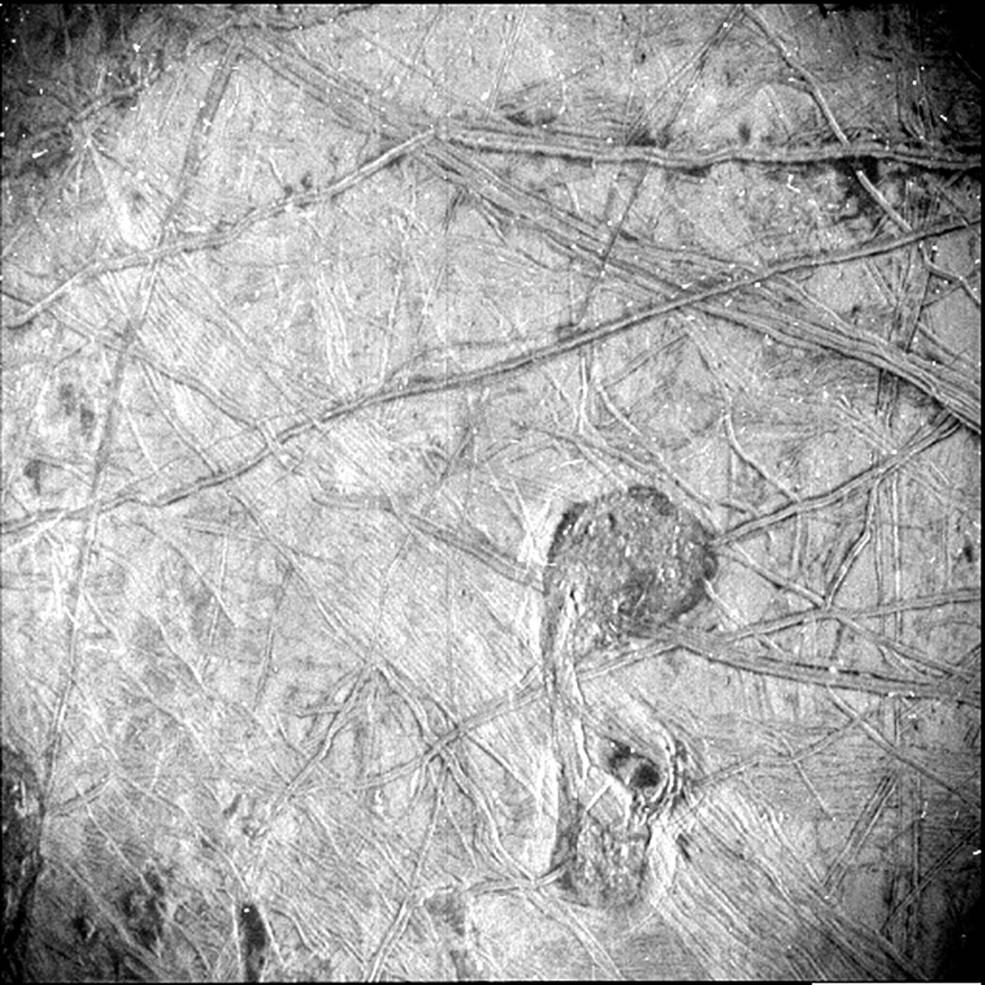
Scientists are confident that a salty ocean is what lies below the miles-thick ice shell surrounding Europa that can be seen from these high-res remarkable images, sparking questions about the potential habitability of the ocean for Earth-like life.
In the early 2030s, NASA’s Europa Clipper spacecraft is expected to arrive on Europa to answer these questions about it’s habitability, as we already know it has the essential ingredients for life - water, chemistry and energy. The data from the Juno flyby has provided a preview of what this future mission might reveal.
Get the Digital Camera World Newsletter
The best camera deals, reviews, product advice, and unmissable photography news, direct to your inbox!
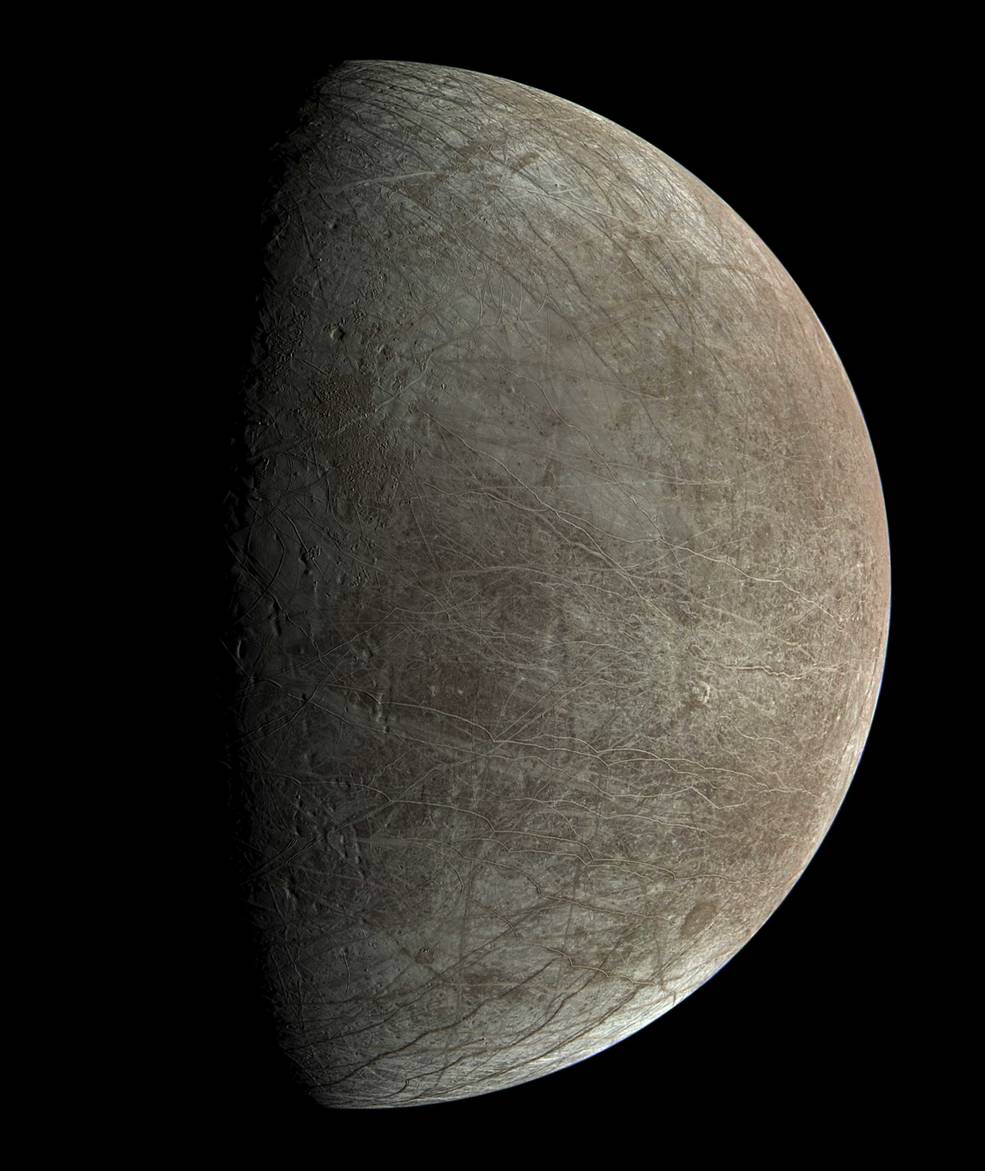
The images were captured as Juno raced past the moon at about 15 miles per second (24 kilometers p/s), over a part of the surface that was currently in the nighttime, having been dimly lit by what NASA calls “Jupiter shine” – sunlight that is reflecting off Jupiter’s cloud tops.
Designed primarily for low-light conditions, the SRU camera is a valuable science tool, not only discovering areas of shallow lightning in Jupiter’s atmosphere, but also capturing Jupiter’s main dust ring system, and now providing scientists with a glimpse of Europa’s most fascinating icy formations.
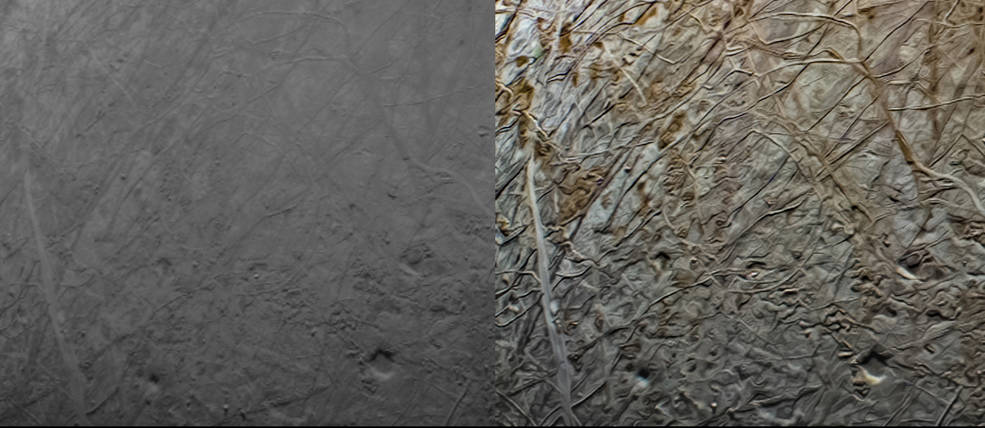
Lead co-investigator for the SRU, Heidi Becker, has shared that “This image is unlocking an incredible level of detail in a region not previously imaged at such resolution and under such revealing illumination conditions.”
She continues, “The team’s use of a star-tracker camera for science is a great example of Juno’s groundbreaking capabilities. These features are so intriguing. Understanding how they formed – and how they connect to Europa’s history – informs us about internal and external processes shaping the icy crust.”
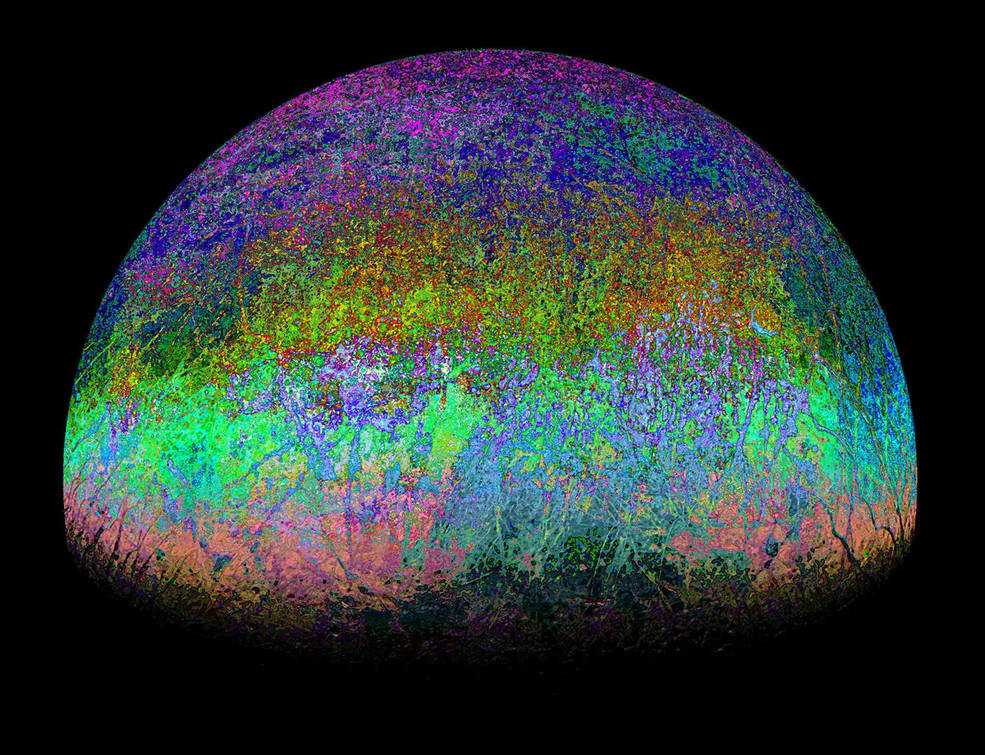
The largest image covers about 93 miles (150 kilometers) by 125 miles (200 kilometers) of Europa’s surface, revealing a region with elevated features in the ice, crisscrossed with a network of fine grooves and double ridges. We can see dark stains on Europa that NASA says are possibly linked to something erupting from below onto the surface, the circular dark spot in the lower right is a Callanish Crater.
White dots that can be seen in the image are supposedly signatures of penetrating high-energy particles from the severe radiation environment situated around the moon, while revealing tectonic stresses that it has endured over time. This isn't the first Jupiter flyby that the Juno spacecraft has completed, as it previously sailed by Jupiter’s moon Ganymede – the solar system’s largest moon – in June 2021.

“With this flyby of Europa, Juno has now seen close-ups of two of the most interesting moons of Jupiter, and their ice shell crusts look very different from each other. In 2023, Io, (volcanic Jovian moon) the most volcanic body in the solar system, will join the club.” Stated Scott Bolton, Juno Principal Investigator at the Southwest Research Institute in San Antonio.
In more recent news, citizen scientists have been encouraged by NASA to process the supplied raw images captured by the Juno spacecraft's public-engagement camera, JunoCam. These edited images have been invaluable in helping fill in gaps from images obtained by NASA’s Voyager and Galileo missions, causing larger surface features to stand out, plus creative psychedelic renderings.
• You may also be interested in the best deep-space telescopes, as well as the best telescopes for astrophotography, and our guide to the best star tracker camera mounts for astrophotography. Check out this NASA-designed lens, used by Stanley Kubrick, on display at Zeiss Museum.

Beth kicked off her journalistic career as a staff writer here at Digital Camera World, but has since moved over to our sister site Creative Bloq, where she covers all things tech, gaming, photography, and 3D printing. With a degree in Music Journalism and a Master's degree in Photography, Beth knows a thing or two about cameras – and you'll most likely find her photographing local gigs under the alias Bethshootsbands. She also dabbles in cosplay photography, bringing comic book fantasies to life, and uses a Canon 5DS and Sony A7III as her go-to setup.
